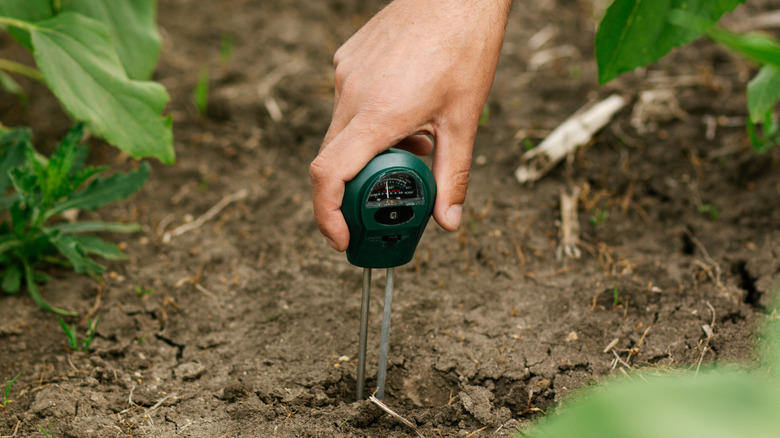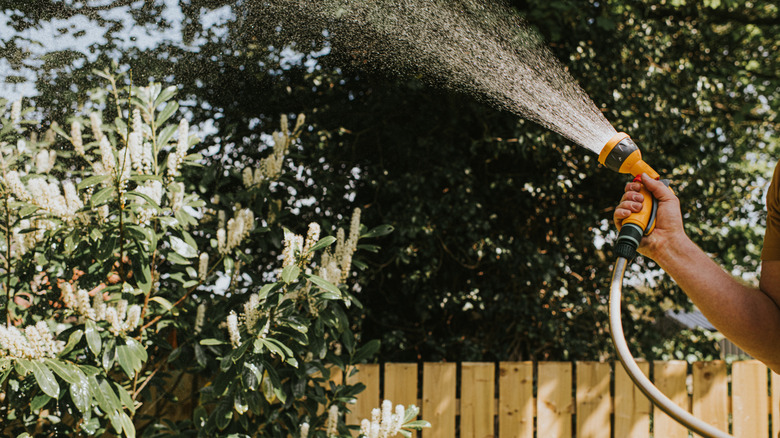Martha Stewart's Gardening Hack To Stop Wasting Water
We may receive a commission on purchases made from links.
A flourishing garden is the crown jewel of any home, but unlike a jewel, gardens require constant attention to maintain their vibrancy. To keep your garden plants thriving, you might be watering them two or more times a week, depending on the environment you live in and the size of your yard. While this might not seem excessive to a devoted gardener, your water usage can add up. The EPA's WaterSense reports that the average American household uses 320 gallons of water every day, with up to 60 percent of that usage being outdoors — depending on where you live; if you're watering your plants often, you could be using over 1,344 gallons a week.
You don't have to let your wallet go dry to keep your plants hydrated. Martha Stewart knows a great hack for solving your water woes: using a moisture meter. "Using a moisture meter to measure your soil's moisture can reduce water waste and help understand other factors in your soil, such as pH," Stewart says in Ask Martha, a part of the Growing with Martha Stewart partnership with Miracle-Gro.
Moisture meters assess moisture levels in various mediums, including wood and drywall, with specific types developed to ascertain soil moisture, such as the XLUX Soil Moisture Meter. After inserting the meter's probe into your garden's soil, you'll be able to immediately see how hydrated the earth is, allowing you to avoid mistakes when watering your garden.
Using a moisture meter
A moisture meter measures your soil's humidity through sensors located in the meter's long, metal probe. To receive the most accurate readings, insert the probe near—but not into—the plant's root ball. Push the meter as far into the soil as it will go. In moments, the meter will return a reading, but the kind of reading will differ depending on the moisture meter, with some displaying scales from dry to wet and others relying on numbered systems. Follow the instructions that came with your meter to get the most accurate results.
Once you're able to test your garden's moisture levels, you can work on improving those levels by monitoring soil drainage. Native grasses and plants are a great solution to excessive watering, as native plants are low-maintenance and well-suited to the natural environment you live in. In addition, they're eco-friendly and perfect for bringing birds to your yard.
Adopt better watering practices
A new watering schedule might seem like a small change, but it can have a huge impact on your water consumption. "The cooler temperatures in the early morning are ideal for watering," said Stewart in her article for Miracle-Gro, "It's best to avoid the full sun and high temperatures it brings to ensure the water soaks into your soil before it evaporates."
Watering plants in the morning is also better for plant health, as it gives plants the moisture they need to survive a hot, sunny day. Evening watering can also be helpful, though not as much as morning watering. While the coolness of an evening may provide some of the same benefits as morning watering, plants will not have as much time to dry off, which can leave them vulnerable to diseases such as root rot. Other watering options that can save money and promote healthy plant growth include drip irrigation, which adds water over time rather than all at once.
By using a moisture meter to continuously monitor your garden, you track the effects of new watering practices and adjust them depending on the time of year and weather conditions. This simple hack might seem small, but it can make a massive difference in the health of your garden—and your water bill.


